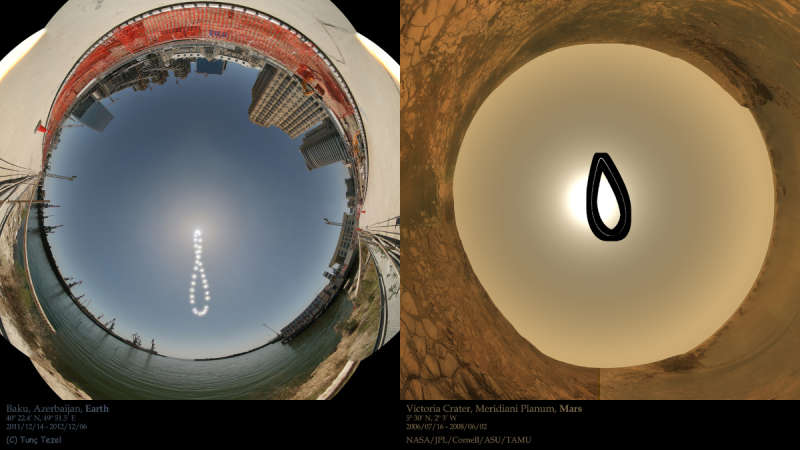APOD: 2025 June 21 Б Two Worlds, Two Analemmas

Explanation:
Sure, that figure-8 shaped
curve you get when you
mark
the position of the Sun in Earth's sky at the same time each
day over one year is called an analemma.
On the left,
Earth's figure-8 analemma
was traced by combining wide-angle digital images
recorded during the year from December 2011 through December 2012.
But the shape
of an analemma depends on the eccentricity of a planet's
orbit and the tilt of its axis of rotation,
so analemma curves
can look different
for different worlds.
Take Mars for example.
The Red Planet's axial tilt is similar to Earth's, but its orbit around
the same sun
is more eccentric (less circular) than Earth's orbit.
As seen from the Martian surface, the analemma traced
in the right hand panel is shaped more like a tear drop.
The Mars rover Opportunity captured the images used
over the Martian year corresponding to Earth dates July 2006 to June
2008.
Of course, each world's solstice dates still
lie at the top and bottom of their different analemma curves.
The last
Mars
northern summer solstice was May 29, 2025.
Our fair planet's 2025 northern summer solstice is at
June 21, 2:42 UTC.
Authors & editors:
Robert Nemiroff
(MTU) &
Jerry Bonnell
(USRA)
NASA Web Site Statements, Warnings,
and Disclaimers
NASA Official: Jay Norris.
Specific
rights apply.
A service of:
LHEA at
NASA /
GSFC
& Michigan Tech. U.

